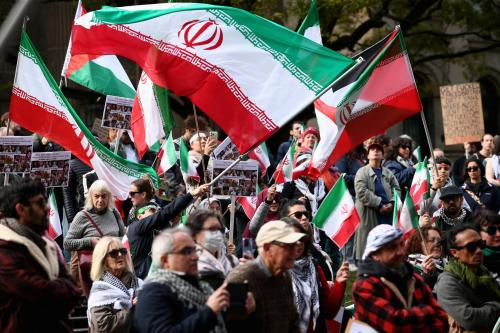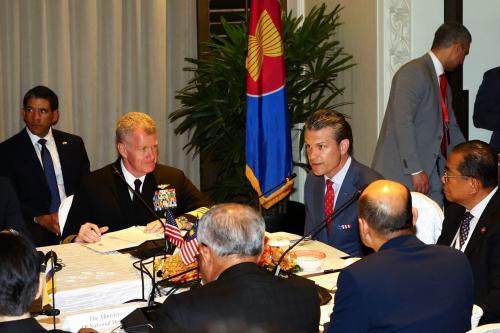In a July 31 article (“Classified documents on nukes seen at risk”) you report that earlier this year “a State Department document identifying the locations of overseas nuclear weapons storage facilities. . .was mistakenly declassified and posted on the Internet before being withdrawn.”
While the U.S. government has almost always adhered to the policy of neither confirming nor denying the presence or absence of nuclear weapons at any particular location–including the historical deployment of nuclear weapons?the location of nuclear weapons storage sites in the United States and overseas has long been an open secret.
For example, our just-published book, Atomic Audit: The Costs and Consequences of U.S. Nuclear Weapons Since 1940 (Brookings Institution Press), recounts the following exchange between Air Force Maj. Gen. Edward Giller and Representative Manuel Lujan, New Mexico Republican, during a 1973 congressional hearing on nuclear weapons in Europe:
Rep. Lujan–“Do the Russians know where all of these are?”
Gen. Giller–“Most of our stockpile sites have characteristic fencelines, lighting, and communication facilities. I would imagine they know where most of them are.”
We also reprint remarks by Senator Stuart Symington, Missouri Democrat, in 1973 describing a trip he made to Europe in 1967:
“. . .I saw one of our missiles, either the Honest John or Pershing. . .and they emphasized how secret it was. They had it all done right up to the actual firing for me, including the whistle. Everybody came in and went to their post, you might say, under the alert immediately. . . . I suddenly looked up and I saw scores of civilians standing around a sort of punch bowl in which all of this was located. I said, ‘Who are those people?’ He said, ‘They are the people living around here.’ I said, ‘They are looking at everything you are doing. You said it is highly classified. How about it?’ The General in charge said, ‘The [deleted] are a very homogenous people.’ That was the answer.”
On our project’s Web site, we have created a document listing all current and many former nuclear weapons production, deployment, and storage locations. The source for some of this information is Taking Stock: Worldwide Nuclear Deployments 1998 published by the Natural Resources Defense Council in March. That report, based on open-source materials and data gathered under the Freedom of Information Act, shows that there are presently only 10 overseas nuclear weapons storage depots containing about 150 nuclear weapons, all B61 gravity bombs, down from 125 depots containing 6,551 warheads in 1985. These depots are located in Belgium, Germany, Greece, Italy, the Netherlands, Turkey, and the United Kingdom.
Although the U.S. government prefers not to acknowledge the role of these depots largely in order to avoid straining relations with our NATO allies, their existence is not a secret. Nevertheless, some overzealous classification officials continue to treat any mention of nuclear weapons as secret, no matter how old or mundane. How else to explain why the Department of Energy–in a 1996 declassification review of a 1961 congressional report to President Kennedy on nuclear weapons safety in Europe–carefully deleted the deployment countries for the Jupiter missile, even though this system was only ever deployed in small numbers in Italy and Turkey (public knowledge for more than three decades) and was withdrawn from service following the Cuban Missile Crisis in 1962? The identical document, at the National Archives and declassified there in 1988, contains no such deletions.
Some nuclear weapons secrets (such as design and use data) are worth protecting. But the government should stop wasting taxpayer dollars and stymieing further declassification efforts trying to hide information that no longer requires classification and is already out in the open.
The Brookings Institution is committed to quality, independence, and impact.
We are supported by a diverse array of funders. In line with our values and policies, each Brookings publication represents the sole views of its author(s).



Commentary
Op-edWasting Money Protecting Open Nuclear Secrets
August 8, 1998